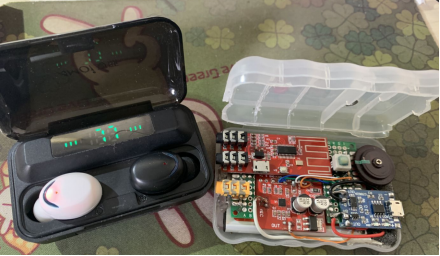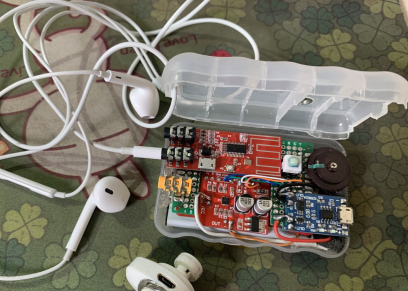DIY Wireless Hearing Aids for Elderly with Hearing Loss: Step-by-Step Guide

If there are elderly people in your family with moderate hearing loss, you can take a look at this article to alleviate the pain caused by their rapid hearing decline.
First, it is necessary to describe the current situation of "hearing loss" in the elderly: the sound of "rumbling" heard when riding a regular train (poor sound isolation inside the car) passing through a tunnel, or the decrease and discomfort in hearing caused by the pressure difference when riding a regular bus on a high-altitude road. If you haven't experienced these two situations, it's similar to listening to DJ music at a high volume with headphones (or earplugs), and when you take off the headphones, your ears are no longer the same in terms of hearing. These are roughly the current hearing status of the elderly. Of course, the hearing status of the elderly varies: some can barely hear external sounds without the need for additional hearing aids, while others need the assistance of hearing aids to hear voices (stores selling hearing aids usually conduct tests on the buyer's hearing before purchase to determine the corresponding configuration of the hearing aid based on the degree of damage in high, medium, and low frequencies).
If the test determines that it is "moderate hearing loss, with more severe low-frequency loss," you can refer to the production of hearing aids to create a hearing aid suitable for elderly people to wear.
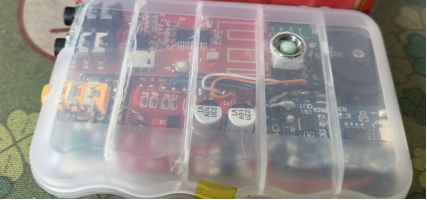
Production process: (1) MAX9814 electret microphone amplifier board (module) (referred to as module 1), which is very suitable for making hearing aids and is the best choice. This module comes with an amplifier, and by connecting it to power and a microphone, it can drive regular wired headphones as hearing aids without the need for an additional amplifier. Especially the module's built-in AGC (Automatic Gain Control) function is excellent! Making hearing aids with AGC function is crucial in the production process!
The MAX9814 electret microphone amplifier board (module) can adjust the volume in three levels through the "jumper cap" on the module, but it is not a smooth linear adjustment, and it is not very convenient to adjust the volume by plugging and unplugging during wearing. Therefore, it is recommended to install an adjustable potentiometer on the output port of the microphone (if two modules are shared, the resistance value of the adjustable potentiometer is 50K; if module 1 is used separately, the resistance value is 250 ohms) to achieve "smooth" linear adjustment of the output volume.
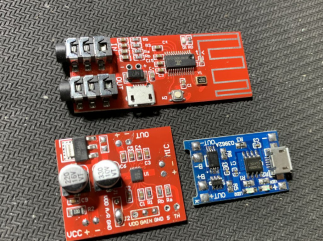
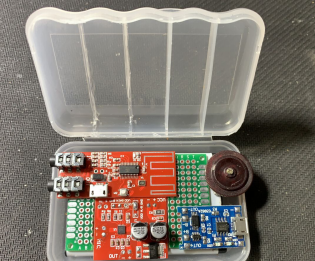
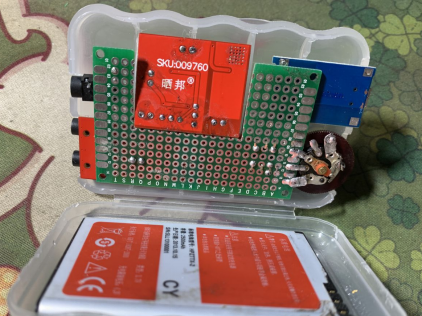
(2) Bluetooth transmitter + receiver module (referred to as module 2). Connect the already assembled module 1 to the audio signal input port at the top of module 2 to achieve the production of a "wireless" hearing aid, which can be used with Bluetooth headphones or wired headphones for listening.
Before powering on module 2, press the volume adjustment button on the module, and then power on, you can select and achieve the "transmit mode" (to achieve wireless hearing aids, this "transmit mode" must be selected), and this selection will be retained after power-off, so you don't have to repeat this operation every time you turn it on. This module has an amplifier, and when module 1 and module 2 are used together, the volume is higher than that of module 1.
With the addition of module 2, the hearing aid has achieved "wireless" functionality, eliminating many inconveniences of "wired" connection. However, there are three shortcomings: 1. The communication distance between Bluetooth headphones and the module is only about 3 meters, not the nominal 10 meters, I don't know the reason for this, but this distance should be sufficient; 2. There is a delay of about 0.5 seconds during Bluetooth headphone calls, which cannot be solved. It is said that Bluetooth delay is a common problem that cannot be overcome. 3. The MAX9814 electret microphone amplifier board is a mono module, but as a hearing aid, it should not be necessary to have stereo functionality, as long as it has the function of assisting in hearing human voices.
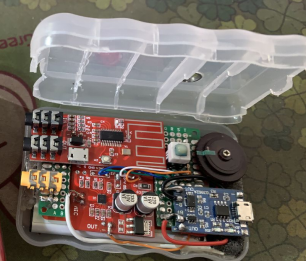
(3) Two modules can use 18650 lithium batteries or polymer lithium batteries. The current consumption of module 1 is about 4.3mA, and module 2 reaches 32mA. It can be equipped with a 4056 charging module for charging while using.
(4) Effects of use (when both modules are activated): The "wired" mode works very well (connect wired headphones to the lower interface of module 2). The "wireless" mode requires adaptation due to the delay but can be chosen by the wearer. After wearing it, I can hear environmental noises and even hear the long-lost chirping of distant birds.
(5) Regarding the issue of "friction noise," due to the use of module 1 with AGC function, the friction noise is completely acceptable. As for sudden impacts, honking on the road, loud coughing, etc., they are completely unnecessary to worry about due to the timely "suppression" provided by AGC!
These two modules are technologically mature, well-made, not easily damaged, and once assembled and simple debugging is done, they can be used for a long time.
